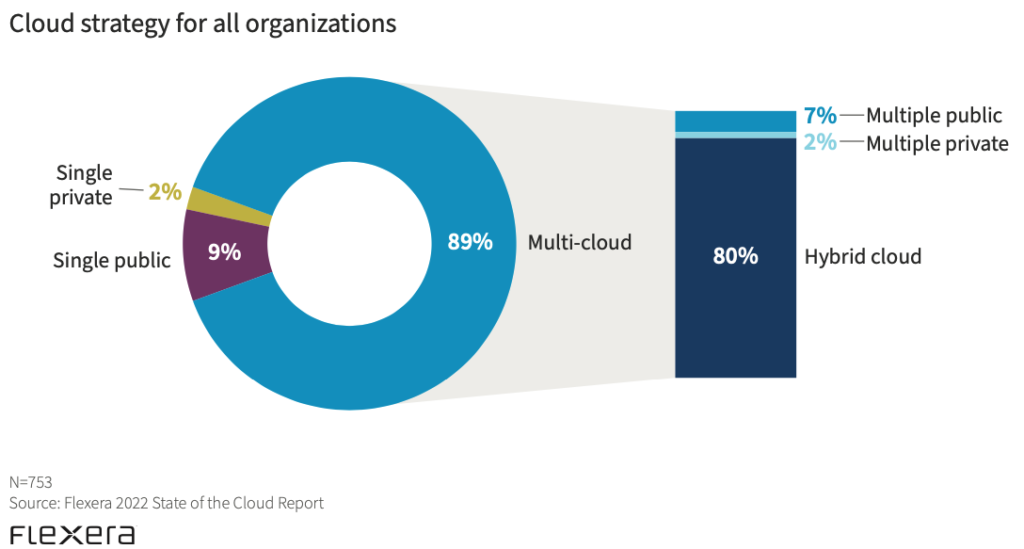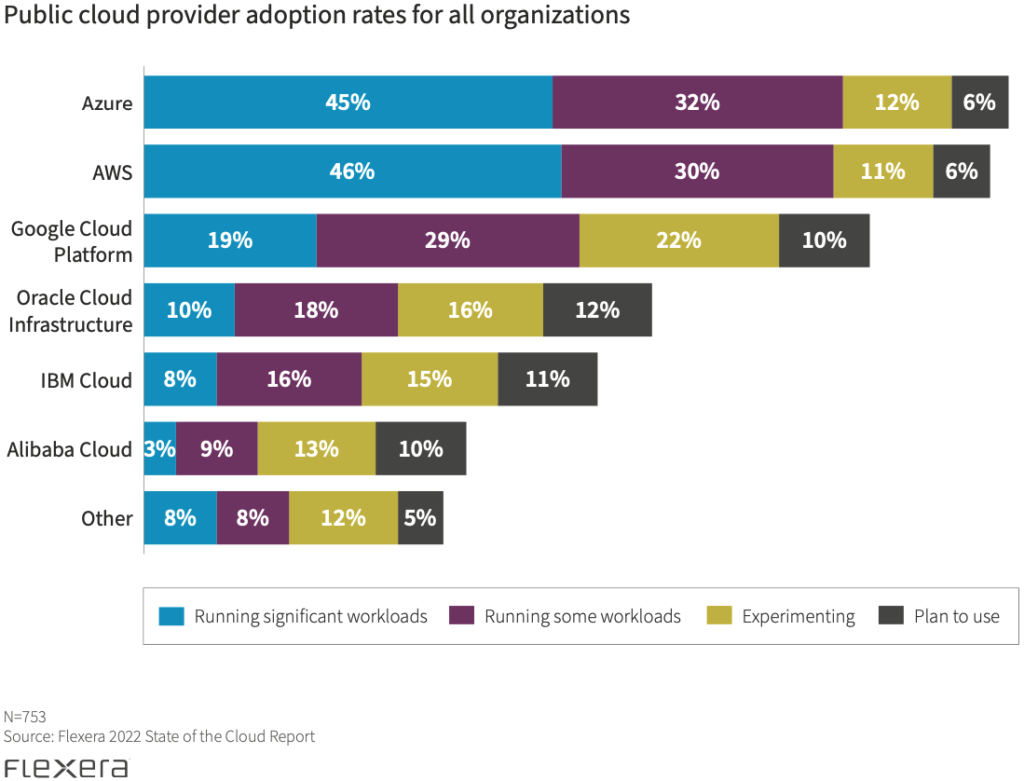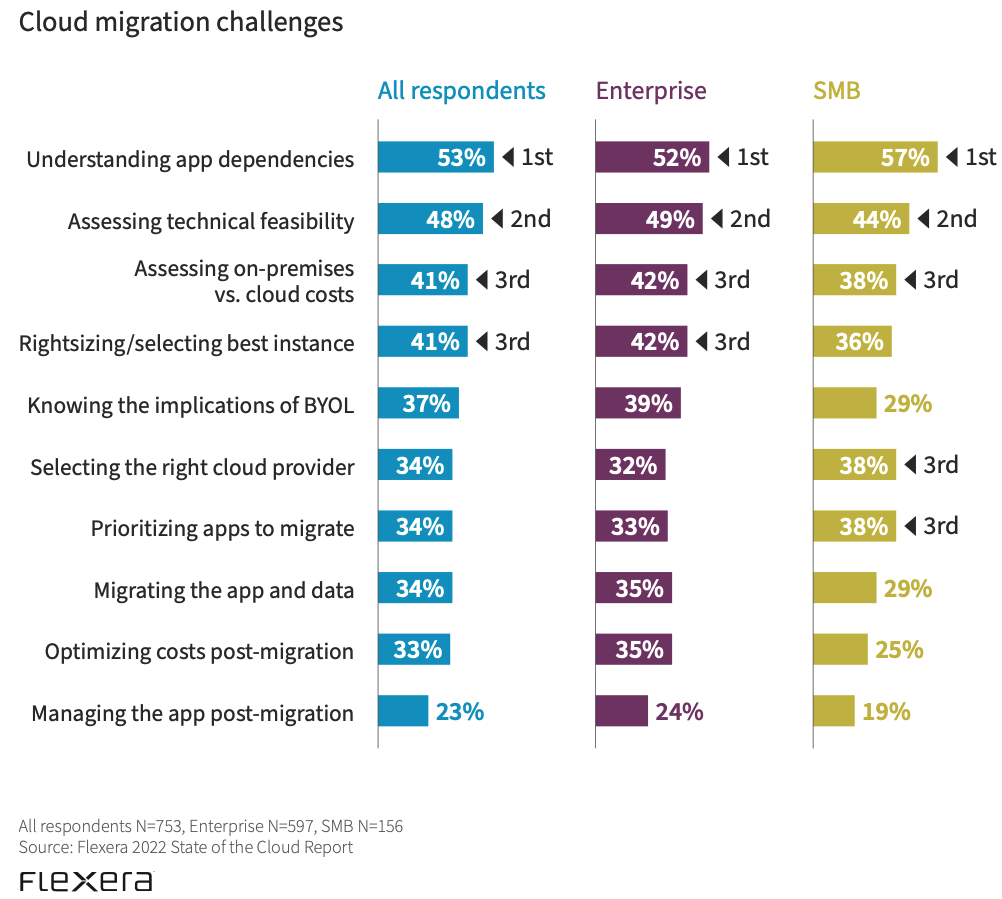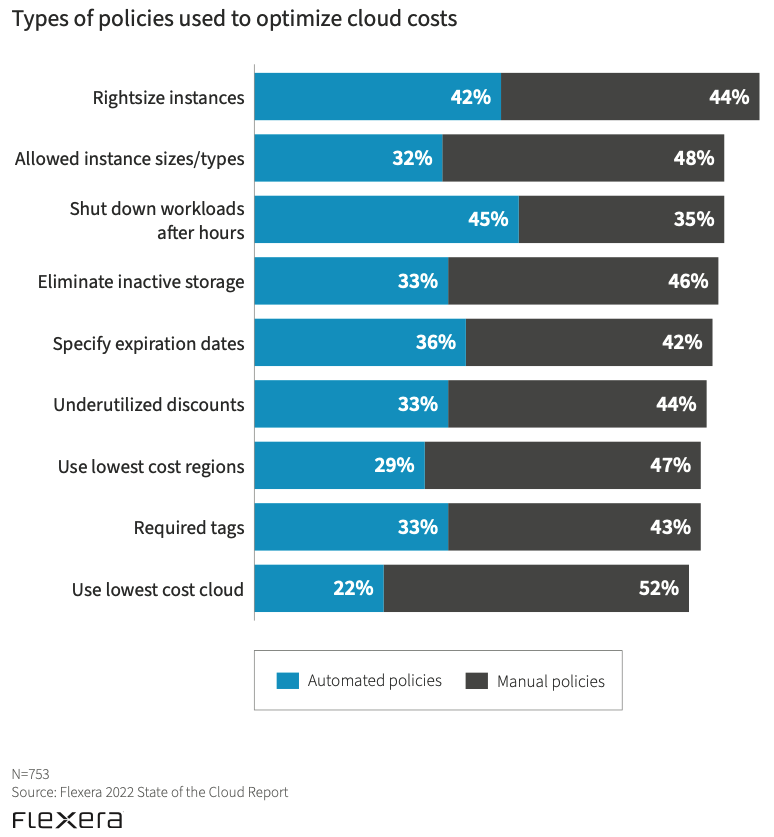Cloud is at the core of companies’ IT strategy and is at the crossroads of business and technical decisions. Understanding how companies are using cloud, where they are investing and what their challenges are will help you to support upcoming stages of your cloud journey. Flexera just released its State of the Cloud report, it gives good insights about cloud usage, cloud market practices and trends. In this year’s edition, Flexera interviewed 753 people, 80% of them working in large companies with more than a thousand employees, most of them working in the US (64%), and in Europe (20%).
In this year’s report, we have identified 5 main topics that we will describe more precisely:
Multicloud is the new standard
Nearly all companies are having a multicloud strategy, with 89% of Flexera’s report respondents using several public cloud providers.

However, at Holori we noticed that there is a difference between the possible usages of multicloud. Most people understand it as having accounts and running apps on multiple providers. This is good to benefit from the different services each provider can offer, however, the architecture remains siloed (45%) and is not evolutive. Holori’s vision is different, as we believe in the potential of cross-cloud optimization where cloud resources at multiple providers are used dynamically.
We can however see that the market is also moving towards this direction since this is reflected in some answers of Flexeras’ report: companies are now starting to do data integration between clouds (41%), move workloads across clouds (36%) and start doing intelligent work placement (25%).

Public cloud adoption is growing
As you can imagine, becoming a top tier cloud provider requires time and resources. No surprise again this year, with the usual 3 cloud giants, Microsoft, Google and Amazon keeping the lead. There are however interesting take-aways from this year’s edition of Flexera’s report.
Data shows that Azure usage surpasses that of AWS. This could be explained by the fact that “AWS is used more frequently by organizations that have been using the cloud over a longer period and are heavy cloud users”. Looking at the answers for heavy cloud use, 81% use AWS compared to 80 % using Azure. Flexera’s report highlights the fact that “GCP remains in third place among all maturity levels, its popularity is significantly higher (51 %) within organizations with heavy use of the cloud”. While Azure and AWS have the biggest adoption rate for the respondents, they also have the largest percentage of people running significant workloads (around 45% each) when Google only has 19% of respondents running such workloads.
Holori’s take on this is that Google should catch-up on AWS and Azure since they more people (22%) experimenting or planning to use them than the others (11/12%).

Cloud migration remains challenging
Companies IT is often complex, and always a strategic topic. Challenges are not less critical when it comes to cloud migration. In the graph below you will see that in their annual survey Flexera asked respondents about the main challenges thy are encountering regarding cloud migration.

For all respondents the first challenge to cloud migration is to understand the app dependencies with more than half of respondents (53%) having this problem, the second one is to assess the technical feasibility of migration to the cloud (48%). For SMBs the 3rd challenge is to select the right cloud provider as well as assess the cost of on-premise vs cloud. It’s interesting to note that optimizing the costs after migration has a lower priority than estimating the cost before migration. The overall common challenge for companies is security (85%) which is understandable when companies are using resources that are not fully under their control. Other important challenges such as managing cloud spend (81%) or managing multicloud (71%) remain a high priority over the years according to Flexera’s report.
At Holori we believe that cloud migration should be seen as an opportunity to reduce cloud costs from day one. It is important to choose the right providers and the right resources prior to the initial deployment on the cloud. For this, we released our cloud calculator, a free tool to compare instances from many providers.
Then, once a deployment decision is made, the efforts should not stop there. Optimizing cloud costs requires continuous efforts to make sure that the resources used are the right one, that no money is wasted and that the chosen providers are constantly challenged against the offers of others. This, to ensure the best cost/performance ratio.
Companies keep spending millions in public cloud
Cloud spending can reach significant amounts for companies, that’s why it’s crucial to better understand them to keep them under control.
According to Flexera in their State of the Cloud Report 2022, “8% of all respondents spend more than $60 million, and more than half spend over $2.4 million on public cloud each year. Public cloud spend is even more significant among larger organizations. 37% of enterprises said their annual spend exceeded $12 million and 80% reported that cloud spend exceeds $1.2 million per year”.

Those budgets are increasingly important for companies which is confirmed by the Flexera report. Companies expect their cloud spend to grow by 29% in the next 12 months. It is interesting to note that cloud budgets usually exceed the yearly forecasts by 20%, which highlights the critical need to carefully estimate cloud costs in advance in order to avoid exceeding planned budgets. Another critical data is the fact that 32% of spending’s are wasted. This is not only bad financially but also environmentally as we already explained in a blog article.
How do companies currently optimize their cloud costs?
We have seen that cloud usage is increasing and is very likely to continue to do so in the coming years. It is therefore key to put in place the right practices to keep these costs under control. One of the interesting take-aways from Flexera’s state of Cloud 2022 report is that companies optimize their cloud spends differently depending on the cloud providers. At AWS, the most common way to reduce spending’s is to use reserved instances, saving plans or spot instances At Azure companies tend to negotiate one to one agreements meaning that the most common discount type is the Enterprise Agreement, then come Azure Reserved Instances.

The operation that is performed the most manually is to pick up the lowest cost cloud and identify the lowest cost region, this could be greatly automated by using Holori cloud project calculator. You can access it here:
https://app.holori.com/compare
As we previously explained, optimizing cloud costs should be and remain a continuous objective for stakeholders, not only when deciding to move project to the cloud but during its entire lifetime to challenge the decisions made and benefit from lower prices a other providers.
The rise of kubernetes and containers
At Holori, we believe in Kubernetes, the adoption of Kubernetes (30% of deployments) by large companies demonstrates a need for flexibility in the management of projects and infrastructure. This vision seems to be shared by Flexera State of the Cloud report’s 2022 respondents. Their answers show that container tools such Kubernetes or the provider specific tools such as AWS ECS/EKS or Azure AKS are becoming increasingly important. Large companies prefer to use AWS ECS/EKS or Azure AKS when smaller ones prefer to user Kubernetes. We can bet that the adoption of containers will keep its strong growth over the next years.
As a conclusion we can now say that multicloud is not a question anymore, it has become a reality. With this new reality come new challenges to overcome for users, of course security remains a strong topic but then quickly arises the need for cost optimization. As we understood from the report, the amounts at stake are huge and will likely keep increasing. Companies are now fully aware of it and try to first understand where these costs come from and to optimize them.
We are now looking forward to the Flexera State of the Cloud report 2023 to see the latest trends and challenges amongst cloud experts.





